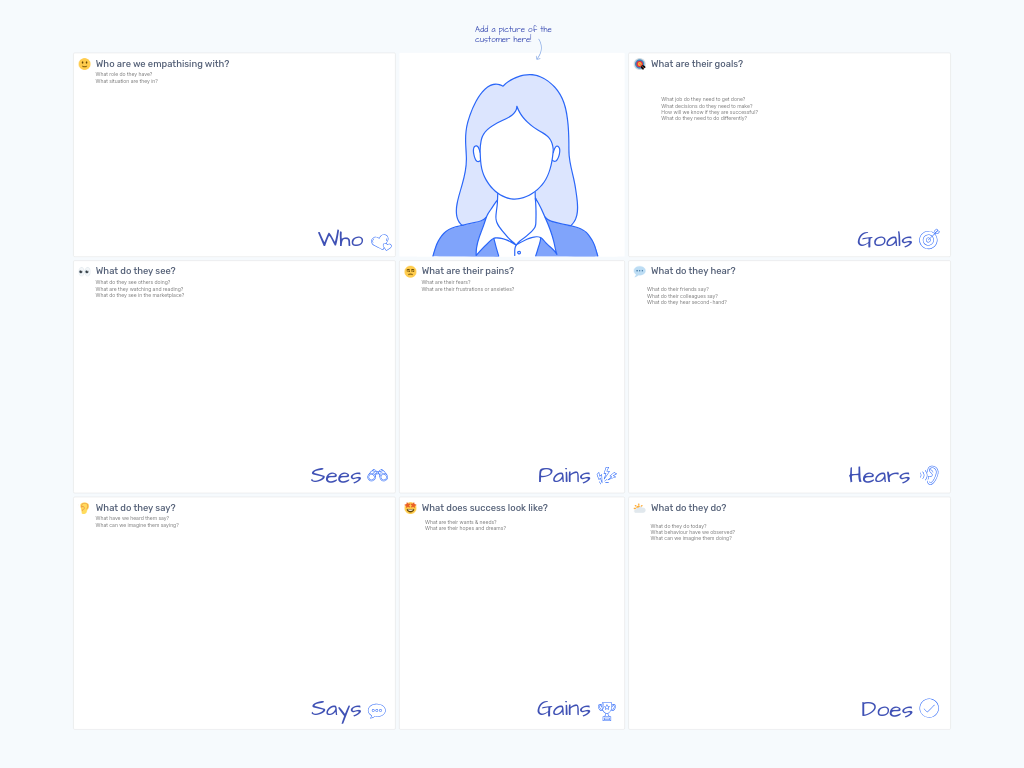Experiment Planner: Turn Ideas into Actionable Tests
An Experiment Planner template provides product teams with a structured approach to test ideas and hypotheses in a methodical way. This collaborative framework helps teams design, implement, and measure experiments that validate assumptions before full implementation, reducing risk and increasing the likelihood of successful product innovations.
What Is an Experiment Planner?
The Experiment Planner is a digital whiteboard template that guides teams through designing controlled tests for product ideas or feature concepts. Rather than immediately implementing new ideas based on assumptions, this template encourages teams to first validate those assumptions through carefully structured experiments.
By breaking down the experimental process into key components—problem definition, hypothesis formation, methodology, audience selection, KPI measurement, and results analysis—teams can transform abstract ideas into concrete, actionable experiments with clear success metrics.
Benefits & When to Use
This template is particularly valuable when:
- You have a potentially impactful idea but aren't certain about its effectiveness
- Your team needs to validate assumptions before committing significant resources
- You want to make data-driven decisions rather than relying on opinions
- You need to demonstrate the potential value of a concept to stakeholders
- You're practicing lean product development methodologies
Benefits include:
- Reduced risk by testing ideas before full implementation
- Clearer thinking about what problem you're actually solving
- Team alignment on what constitutes success
- A structured approach that prevents overlooking critical aspects
- Documentation of your experimental process for future reference
How to Run an Experiment Planner Session
Introduce the activity (5 minutes) Explain to the team that you'll be designing an experiment together to test a specific idea. Clarify that the goal is to create a structured way to validate assumptions before full implementation.
Define the problem (5-10 minutes) Begin with the Problem section. Have the team collaborate to clearly articulate the specific problem they're trying to solve. Use red sticky notes to capture the core problem statement.
Formulate a hypothesis (5-10 minutes) Move to the Hypothesis section. Work together to craft a testable hypothesis that follows the format: "We believe that [action/change] will result in [outcome] for [user group]." Use green sticky notes to capture this.
Design the method (10 minutes) Determine the specific approach for testing your hypothesis. Define the timeframe, required resources, and implementation details. Document these on yellow sticky notes in the Method section.
Identify the audience (5-10 minutes) Specify exactly who will participate in the experiment. Consider sample size, selection criteria, and how participants will be recruited. Use blue sticky notes to document your audience strategy.
Establish KPIs (10 minutes) Define the Key Performance Indicators that will measure success. For each KPI, note the current baseline measurement and the target you hope to achieve. Use blue sticky notes and be as specific as possible with metrics.
Plan for results documentation (5 minutes) Create space for recording experiment outcomes in the Results section. This will be completed after the experiment runs, but setting up this area ensures you'll capture learnings systematically.
Assign ownership and timeframes (5 minutes) Clearly identify who owns the experiment, when it will start, and when it will conclude. Document this in the Experiment Name/Dates/Owner section at the top of the template.
Tips for a Successful Experiment Planner Session
Be specific with your problem statement: Vague problems lead to vague experiments. Take time to refine the problem until it's concrete and well-defined.
Create falsifiable hypotheses: Your hypothesis should be capable of being proven wrong. Avoid statements that can't be clearly validated or invalidated.
Choose meaningful KPIs: Select metrics that truly indicate whether your hypothesis is valid, not just ones that are easy to measure.
Start small: Design experiments that can be completed in days or weeks rather than months, allowing for faster learning cycles.
Document assumptions: Note the key assumptions that underlie your experiment design so you can revisit them when analyzing results.
Plan for both success and failure: Consider in advance what actions you'll take if the experiment confirms or refutes your hypothesis.
Return to the board: After running the experiment, bring the team back to document results and insights, then decide on next steps based on what you've learned.
By using this template regularly, product teams can build a habit of evidence-based decision making that leads to better products and features with higher adoption rates and user satisfaction.



